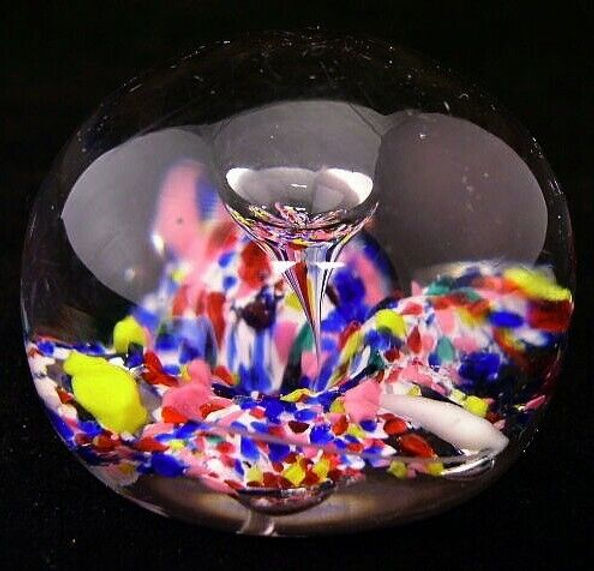This may be what you were weighting for
What if you shopped in a vintage store and stumbled upon a unique and valuable item to be treasured?

Given that paper was invented around 100 BC, it makes sense that a weight to hold paper in place would soon follow.
The earliest modern paperweights appeared in Europe in the mid-1840s. Venetian glassmaker Pietro Bigaglia created and exhibited the first signed and dated weights at the Vienna Industrial Exposition in 1845.

During the classic period of paperweight making (1845–1860), Baccarat, Clichy, Saint Louis and Pantin significantly raised the standards for paperweight makers around the world.

They explored every possibility of the millefiori technique and perfected new motifs such as flameworked flora and fauna. Glasshouses in Bohemia, Silesia, Italy, Belgium and England also took an interest. Glassmakers emigrating to America brought their knowledge of paperweight making to the United States, encouraging the emerging glass industry to follow Europe’s example. Throughout the 19th century, most paperweights were appreciated for their decorative aspects, and some of the most technically advanced weights were seen as collectible d’art. Yet paperweights were the least valued objects made by the glasshouses, and they were not considered as artistically important as they are today. Throughout the 20th century, many artists challenged themselves to break away from traditional designs and use techniques in new ways.

The Studio Glass movement, beginning in the United States in 1962, was a key development. Artistic glassmaking moved from factories to the studio and paperweights became a work of art over function. The record price for a millefiori paperweight is set to a quarter-million dollars in 1990. The most expensive and sought after paperweights are often French ones (maybe from Clichy, Baccarat, St Louis, Pantin or St Mandé), American ones (NEGC, Boston & Sandwich, or modern lampwork of the highest skill), old English paperweights (Bacchus, Richardsons, Walsh Walsh, or Arculus), or certain antique Bohemian paperweights. Antique weights with most common designs – an example may be a single pansy by Baccarat – may sell for anywhere from $500 to $1,500, depending upon the quality.

If you have the interest and time to research the designs and identify the maker and era created, you may very well find a valuable collectible and your own piece of art history at a moderate price to it’s true value! Dishfun offers a collection of beautiful and interesting designs in great condition. Paperweights make a great decoration, serve as a functional masterpiece, and are a wonderful gift. With Father’s Day coming, this may be the perfect idea!
Tap the above photos for details or use the button below to explore the entire collection